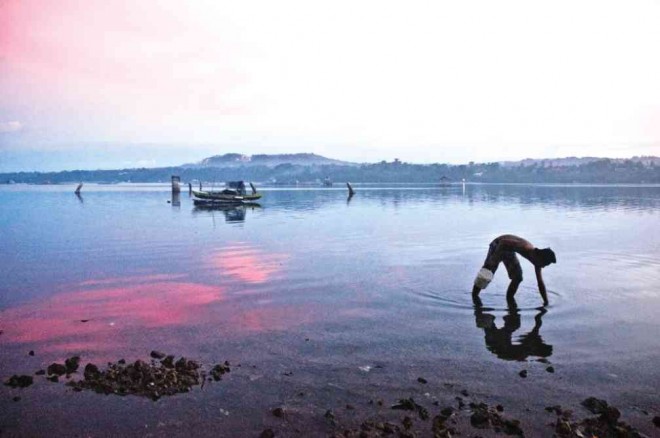
BOHOL folk collect seashells despite a red tide scare in Tagbilaran Bay. In the background is Dauis town in Panglao Island. The BFAR has already banned the gathering and sale of shellfish from areas in Bohol contaminated with red tide toxins.SHERWIN SAPONG/CEBU DAILY NEWS
TAGBILARAN CITY—It took five persons to fall ill for eating shellfish before the Bureau of Fisheries and Aquatic Resources (BFAR) declared a red tide alert and issued a ban on shellfish in three towns and one city in Bohol.
The BFAR in Central Visayas banned the gathering, selling and eating of shellfish in the coastal waters off Dauis, Panglao, Cortes and Maribojoc towns and Tagbilaran City due to presence of red tide toxins.
The agency issued an advisory on June 24 after five persons fell ill of red tide poisoning.
Pablo Lungat, 64, of Dauis town and Carlos Putong, 41, of Panglao town were brought to Gov. Celestino Gallares Regional Hospital (GCGRH) on June 23 for red tide poisoning after eating shellfish.
The next day, Mary Joy Villacorta, 22, was brought to GCGRH after eating coral clams in Tagbilaran City.
On Wednesday night, Landy Lungat, 36, of Dauis and Gaspar Hinlayagan, 43, of Trinidad town, were brought to GCGRH, also for red tide poisoning.
Hinlayagan had a picnic in Dauis when he fell ill after eating seashells.
All five are now out of danger and already recuperating, according to the information desk at GCGRH.
Last week, six construction workers in Barangay Songculan in Dauis town also got sick after eating shellfish but the BFAR could not confirm if it was caused by red tide toxins, which could cause paralytic shellfish poisoning that could be fatal.
Red tide is a phenomenon where algae multiply rapidly and produce toxins that are harmful to wildlife and humans.
The algae multiply faster when there are sudden changes in sea temperature and salinity.
Leo Bongalos, officer in charge of the BFAR Bohol office, said shellfish samples taken from Dauis were found positive of red tide toxins.
The ban also applies to waters in Panglao, Maribojoc, Cortes and Tagbilaran because the water systems in these municipalities and city are connected—Tagbilaran Strait, Maribojoc Bay and Panglao Sea.
Bongalos said all types of shellfish are covered by the ban.
“Fish can still be eaten provided that they are thoroughly cleaned, their internal parts, gills and scales removed and washed well in running water before cooking,” Bongalos said.